Each time I think I’ve seen them all, I come across another extraordinary fuchsia.
And it’s not just Fuchsia magellanica hybrids anymore, either. You’ll find new cultivars from species previously known only in their native range.
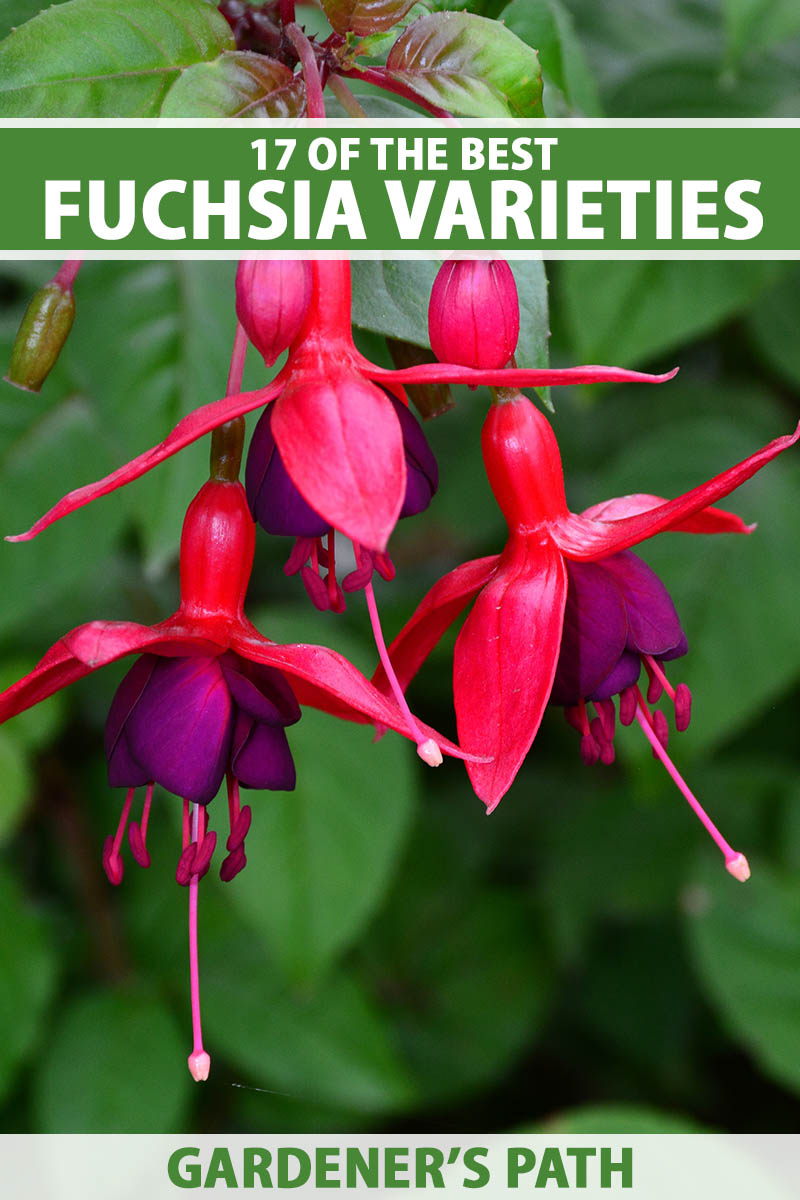
We link to vendors to help you find relevant products. If you buy from one of our links, we may earn a commission.
Some fuchsias are humble, with simple flowers in single colors. Others are huge, full, and multicolored.
Some collapse at the first sign of frost, and others can handle a good amount of freezing weather. You can find them in upright types or with trailing habits.
There are literally thousands of cultivars and dozens of species of fuchsia.
This list merely scratches the surface of the marvels that are out there. There are new ones constantly hitting the market, too.
If you ever stumble across a new cultivar at a nursery or farmers market, grab it. I’ve discovered some new plants bred by local hobbyists that don’t appear on any list I can find that I just adore.
Here are the 17 different species, hybrids, and cultivars we’re going to discuss in this guide. They include some of the most popular, as well as some of the most interesting and exciting new types on the market:
Fuchsia can be broadly categorized as either hardy or tender, and upright or trailing. Some fuchsia lovers further separate hardy types into hardy and very hardy.
Very hardy types start blooming earlier in the year, in either May or June, and can grow reliably in Zones 7 to 9. Hardy types start blooming in June or July and can handle Zones 7 to 9, but may need some protection during long periods below freezing.
For more information about cultivating fuchsia in your garden, check out our growing guide.
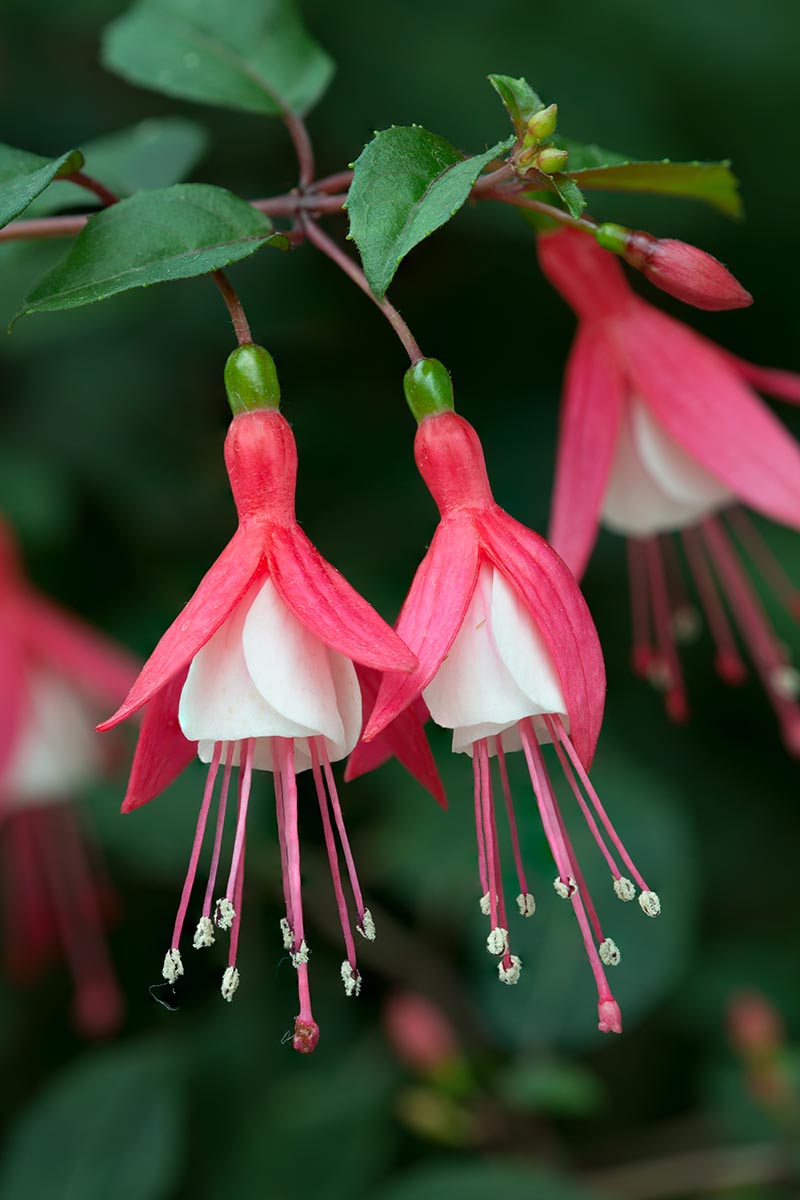
Fuchsia flowers are made up of sepals, tubes, and a corolla. The tube is the part that sits just below the ovary, which is the part that will become a berry as the flower matures.
The sepals are the outer petals that emerge from the tube. Finally, the corolla is the frilly skirt of petals that sits underneath the sepals.
There are also filaments, aka anthers, the little string-like parts that dangle out of the corollas. These can be unremarkable, or they can add a beautiful contrast to the rest of the plant.
Flowers can be single, which means they have four petals, semi-double, which indicates five to seven petals, or double, with eight or more petals.
Most of the fuchsias on this list (and in general) are F. magellanica hybrids, but we’ll call out those that aren’t.
1. Angel Earrings
I have to admit, I can picture the flowers in this cascading series adorning the ears of the most stylish angels.
All of these plants can survive the winter as far south as Zone 10, so they’re tender perennials, and they’re all self-cleaning. They’re also extremely heat tolerant.
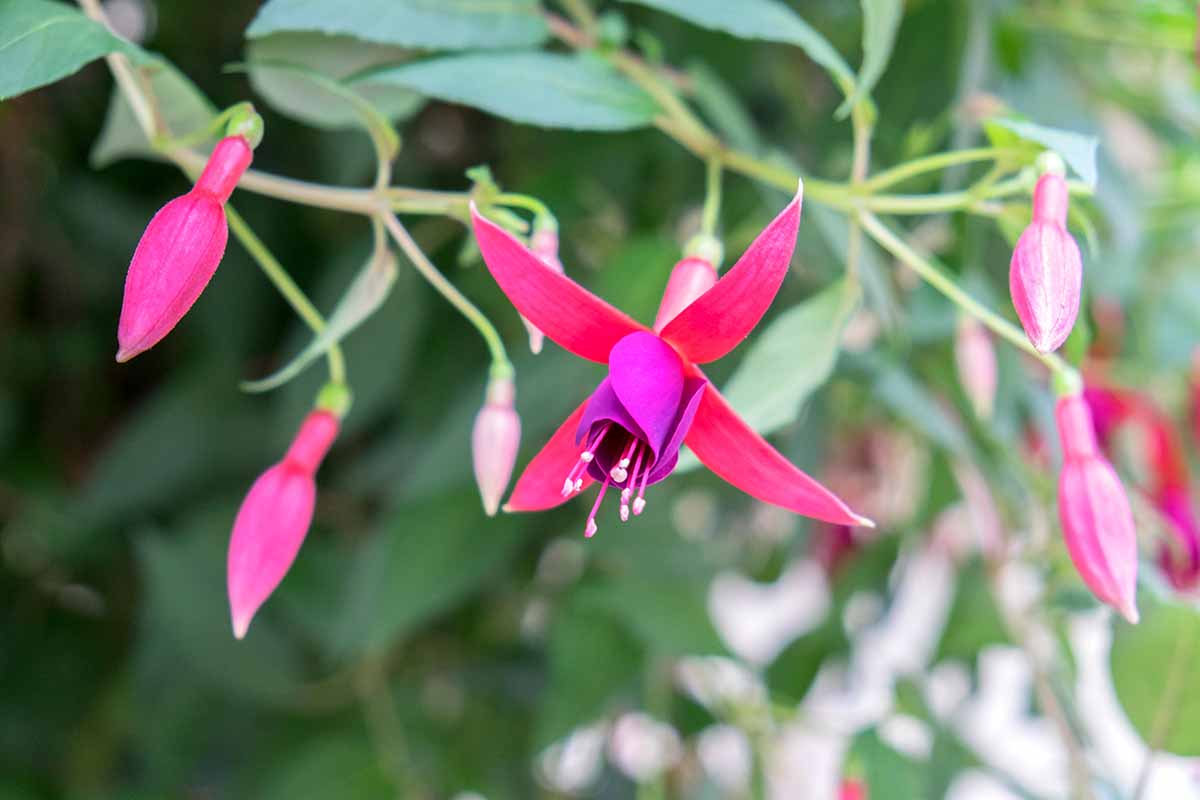
The Angel Earrings series includes several different cultivars. ‘Cascading,’ which has a trailing habit, can grow 20 inches tall and two feet wide.
The semi-double blossoms are a combination of fuchsia pink and vivid violet, though the anthers will fade to pinkish white as the flower matures.
‘Dainty’ is an upright type with semi-double flowers topped with red tubes and sepals surrounding a skirt of reddish-violet petals. It grows about two feet tall and a foot wide.
‘Double Red’ has double blossoms with pink sepals and frilly white corollas. It’s similar in size to ‘Cascading.’
2. Bracelinae
I think F. bracelinae is destined to become much more popular thanks to its tough and hardy nature.
This Brazilian native is extremely hardy, down to Zone 7a, and features reddish-pink single flowers on an upright bush that can grow five feet tall.
It’s much more resistant to drought and fungal diseases than many other commonly cultivated varieties of fuchsia.
3. Dollar Princess
If you’ve picked up a magenta and purple fuchsia in a hanging basket at a big box or home supply store, chances are good it was ‘Dollar Princess.’
This ultra-popular hybrid cultivar isn’t the biggest or the hardiest, but it’s a consistent winner that will perform all season long.
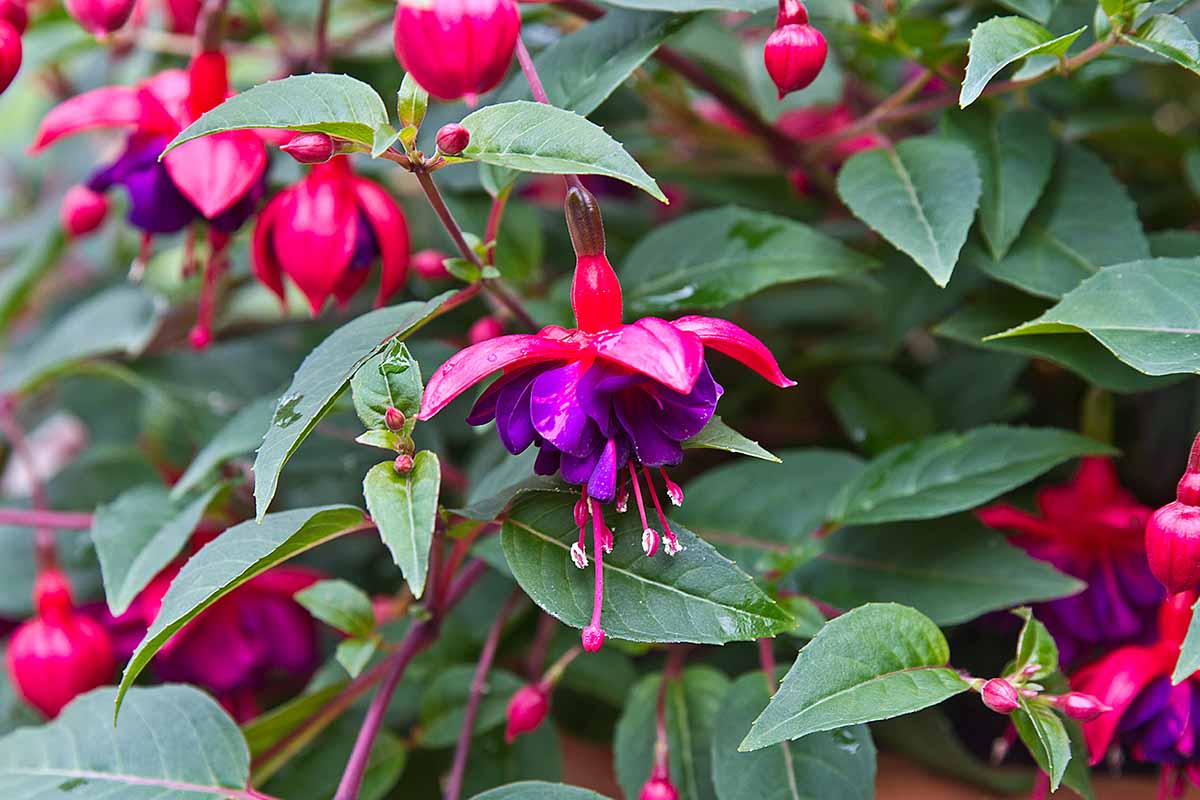
This double-flowering, trailing type is cold hardy down to Zone 8 and its deep purple petals and crimson tubes with long, curving crimson sepals are instantly identifiable.
It will grow to a mounding 18 inches tall and just a bit wider.
4. Caramel Blue
‘Caramel Blue’ is full of interesting elements. The tube on the semi-double flowers is white, flowing into extremely long white sepals with faintly green tips.
Underneath is a skirt of deep-sea-like blue-violet petals gently cupping distinctive red filaments, all framed by deep green foliage.
The plant has an upright, mounded growth habit, reaching 19 inches tall and wide.
It’s a tender perennial, growing well down to Zone 9, though it will survive in Zone 8 with some winter protection during long periods of freezing temperatures.
5. Creeping Fuchsia
It used to be difficult to find creeping fuchsia (F. procumbens) outside of its native New Zealand, but it’s popping up in more and more nurseries in the US – and thank goodness for that!

The plant looks quite different from your usual fuchsia. It grows close to the ground, only reaching a few inches tall, but spreads over three feet wide.
The blossoms are held upright, and they have yellow tubes capped with red and green sepals. There’s no visible skirt, just bright red and purple filaments that triumphantly jut out of the top.
It’s the only plant among all the species and hybrids that has yellow coloring.
The leaves are different, too. They’re more round, with a heart shape rather than being ovate. They’re also quite petite.
The berries that follow the flowers are bright red, large, and juicy. They’re some of the best-tasting fuchsia berries that you’ll find. The plant is hardy to Zone 8.
6. Foxgrove Wood
‘Foxgrove Wood’ has gained widespread attention because it’s exceptionally hardy.
It can survive down to Zone 7a without any protection at all. It’s an upright type with a symmetrical, bushy growth habit. It will reach 24 inches tall and equally wide when mature.
But I think it would be worth growing even if it wasn’t super hardy. The apple green leaves frame the colorful semi-double flowers perfectly.
Each flower has a rose-pink tube and sepals, with the sepals curling sharply upward so they almost touch the tube. It looks like a crown on the lavender-blue petals. The bright red filaments add an extra punch of color.
As the flowers age, they fade to a pale pink.
7. Galadriel
Not only is ‘Galadriel’ as beautiful as some sort of mythical creature from a fairytale, but it’s mysterious, as well.

Sound like a strange thing to say about a flower?
For some reason that breeders don’t yet understand, ‘Galadriel’ can either have single blossoms with creamy white tubes, red-tipped sepals, and blood-red petals, or it can have pale red tubes with red-striped sepals and red petals, also with single blossoms.
It doesn’t matter what growing conditions you give it, it just depends on whether you pick a clone with white or pale red tubes.
If you have your heart set on one or the other, make sure to buy a plant that’s in bloom so you can tell what you’re getting. Otherwise, let it be a magical surprise.
This one has an upright growth habit and is hardy to Zone 8. It has a lovely mounding shape and can reach two feet tall and wide.
8. Lady in Black
‘Lady in Black’ is pretty incredible solely for her burgundy sepals and tubes with nearly black-purple petals.
That’s enough to recommend her, but then you find out how tall she can grow, and it’s a whole ‘nother story.
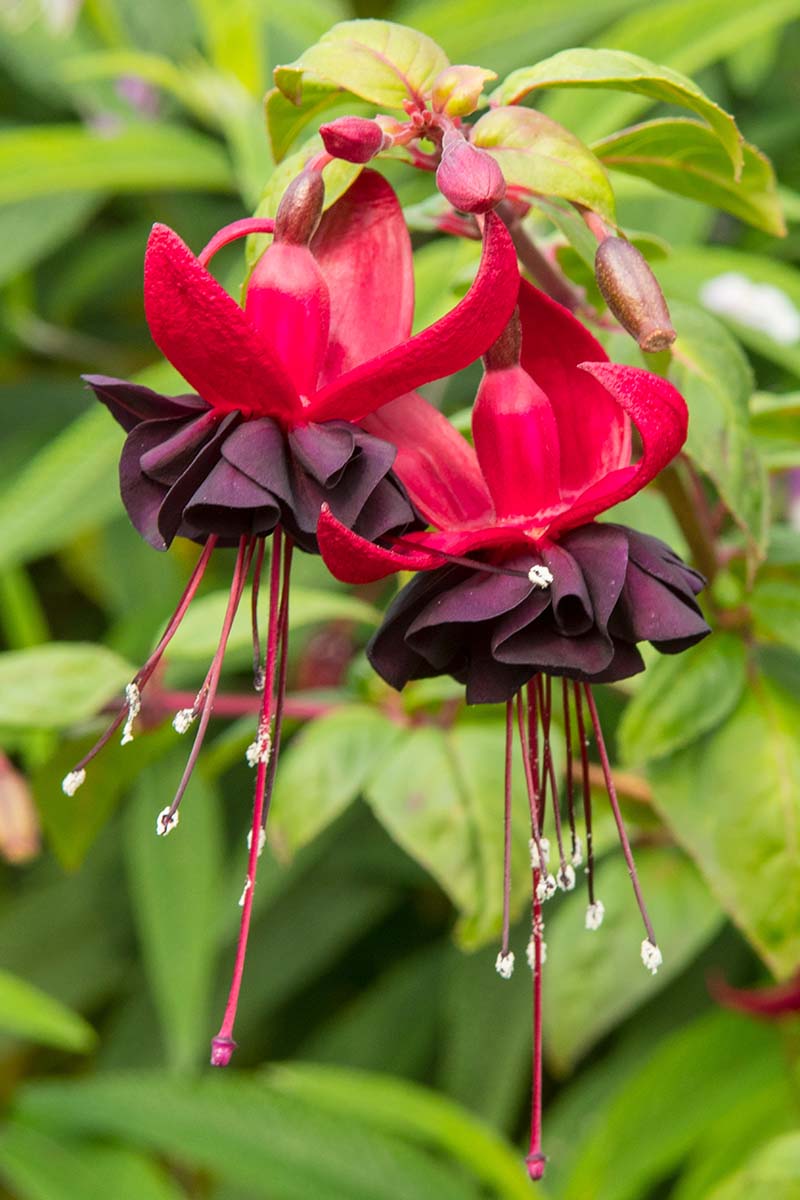
This hybrid is half-hardy and will thrive down to Zone 8, but what sets her apart is that she can climb nearly six feet tall in a single growing season.
You’ll definitely need a trellis or fence for this one to climb up.
Then, sit back and enjoy the extremely dense flowering. One plant can be cloaked in over 500 blossoms.
If you’ve ever lamented that your fuchsia plants never grow as tall as you’d like, this is the solution.
9. Marinka
With reddish-pink tubes, sepals, and corollas, the double flowers on ‘Marinka’ are distinct because of their simplicity.
But don’t mistake simple for boring. This tender trailing type is extremely floriferous and vigorous. When it’s happy, you can hardly see the foliage for the flowers.
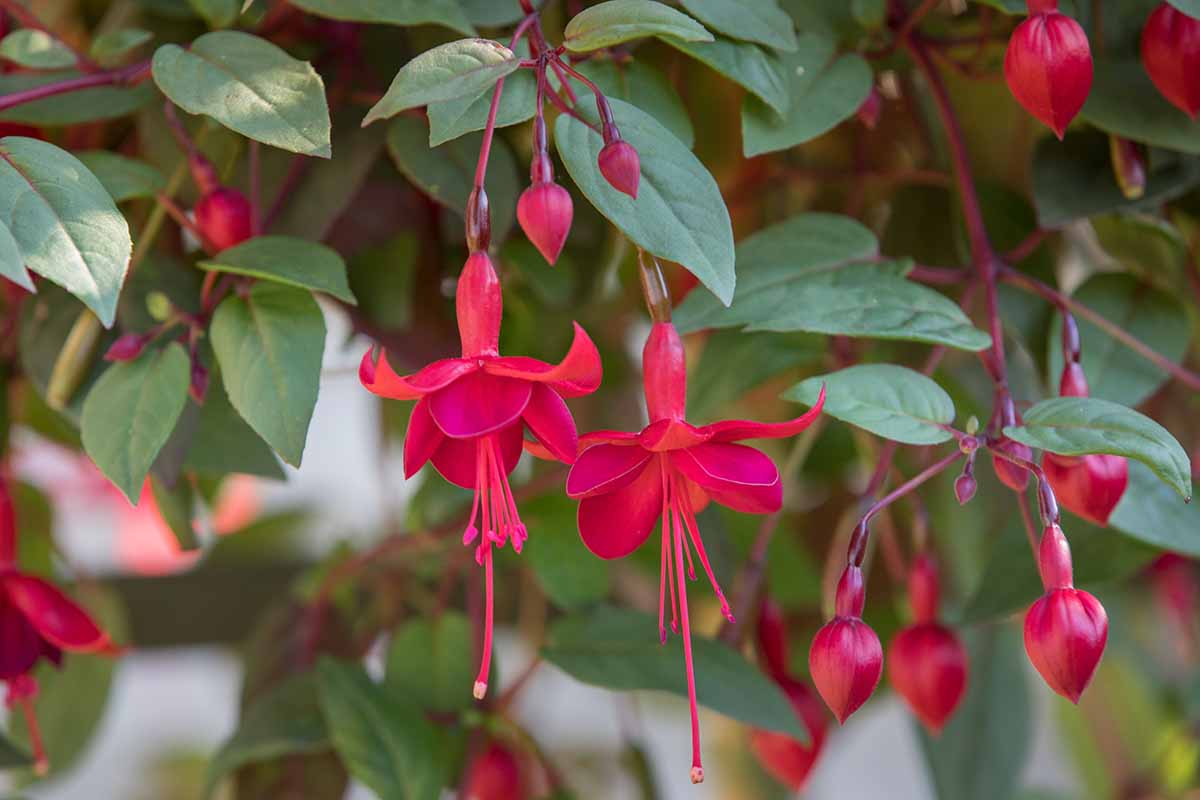
Though it won’t come back year after year anywhere north of Zone 9, you can overwinter it indoors and enjoy the vibrant hues year after year.
It’s perfect for a small spot, since it usually stays under six inches tall and only spreads to about 18 inches.
It’s a reliable rebloomer even if you don’t deadhead it religiously. Learn more about deadheading fuchsia in our guide.
10. Shadow Dancers
Shadow Dancers is a series of tender fuchsias that can grow as far north as Zone 9 as perennials. The trailing plants grow about a foot tall and 18 inches wide.
‘Maria’ has deep reddish-pink tubes and sepals, with cupped, semi-double corollas embracing pink filaments.
The sepals stand out, literally, because they extend flat, so they look like little helicopter blades ready to spin each flower into the sky.
‘Betty’ has bright red tubes and sepals, with a white or pale pink skirt. The sepals are much shorter and rounder. ‘Violette’ has a similar shape, only with soft pink tubes and sepals, and a deep purple skirt.
‘Marcia’ features reddish blossoms with violet petals.
11. Sparky
Sparky is an F. procumbens hybrid, crossed with ‘Thalia,’ and it combines all the cool characteristics of the two.
It carries its single, purple-red and violet flowers upright at the end of the stems and, as with its creeping parent, the corolla isn’t visible.
This plant isn’t creeping, though. It’s an upright type, with violet and green ovate leaves. It’s also more cold hardy than its F. procumbens parent and can thrive down to Zone 7.
You’ll sometimes see this one listed as ‘Lady’s Eardrops,’ but several fuchsias go by this name.
12. Swingtime
‘Swingtime’ is a popular hybrid that will have you dancing for joy. Not only is it hardy with a trailing habit, but it has large, contrasting double blossoms in red with a white skirt.
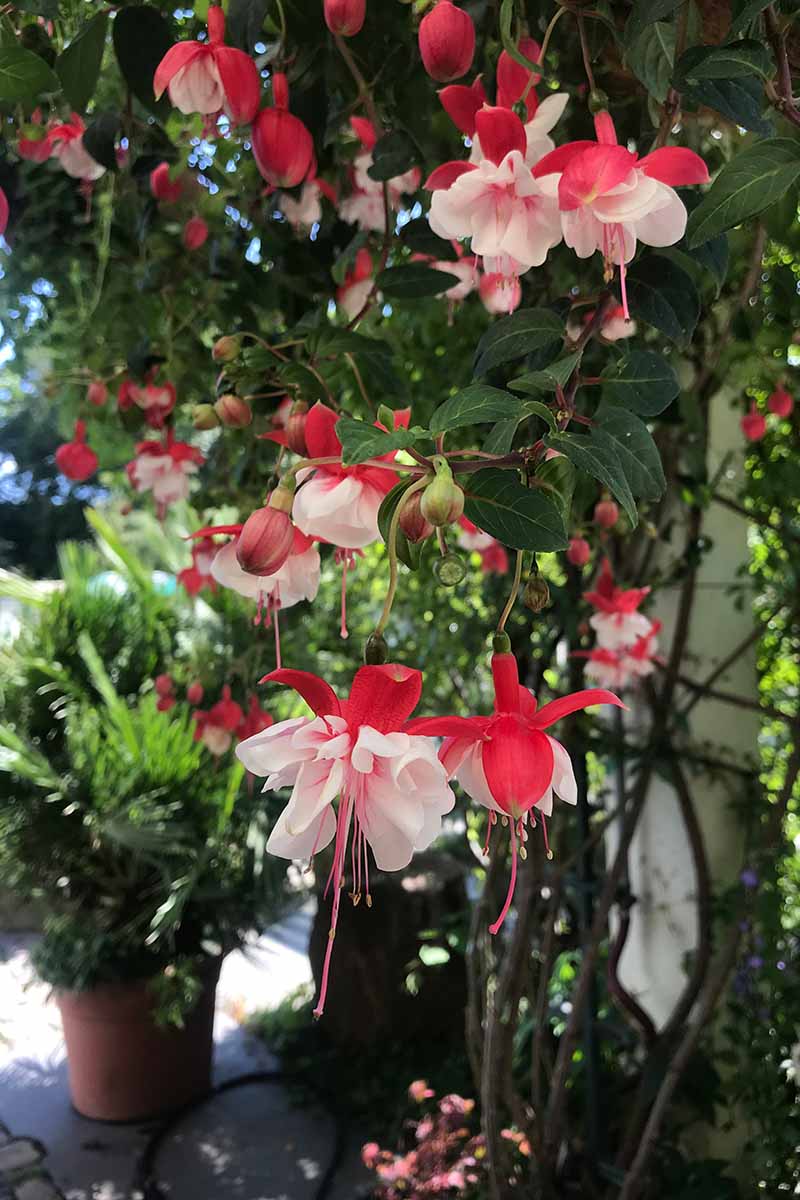
While it’s usually rated hardy to Zone 8b, if you keep an eye on it and protect it during extended freezes, it can survive the winter in Zone 7b.
The plant can reach up to a foot tall and two feet wide, and is draped in masses of flowers from July until frost.
It’s a hybrid cross of ‘Titanic’ and ‘Yuletide,’ two favorites.
13. Sylvia Barker
When I moved to the Pacific Northwest, I quickly discovered that gardeners here take their fuchsias seriously, and one that seemed to inhabit every enthusiast’s garden is ‘Sylvia Barker.’
After growing one in my own space, I realized why.
So here are the technical details: This trailing type is extremely floriferous, with long white tubes and extremely long white sepals that embrace the scarlet red corolla. It grows about 18 inches tall and wide, and is very hardy.
Now for the part where I wax poetic. Fuchsias all attract hummingbirds by the dozen, but the little fliers seem particularly enamored with ‘Sylvia Barker.’ There are always so many visiting my plant that it seems as if they’re a permanent fixture.
The many flowers tend to cluster on the bottom half of the plant, so it almost looks like it’s wearing a poofy dress of white and red blossoms. When grown in a basket, it’s like the plant is positively dripping with petals.
14. Tricolor
F. magellanica var. macro ‘Tricolor’ is one of the rare fuchsias that people grow for the foliage. The flowers are just a bonus.
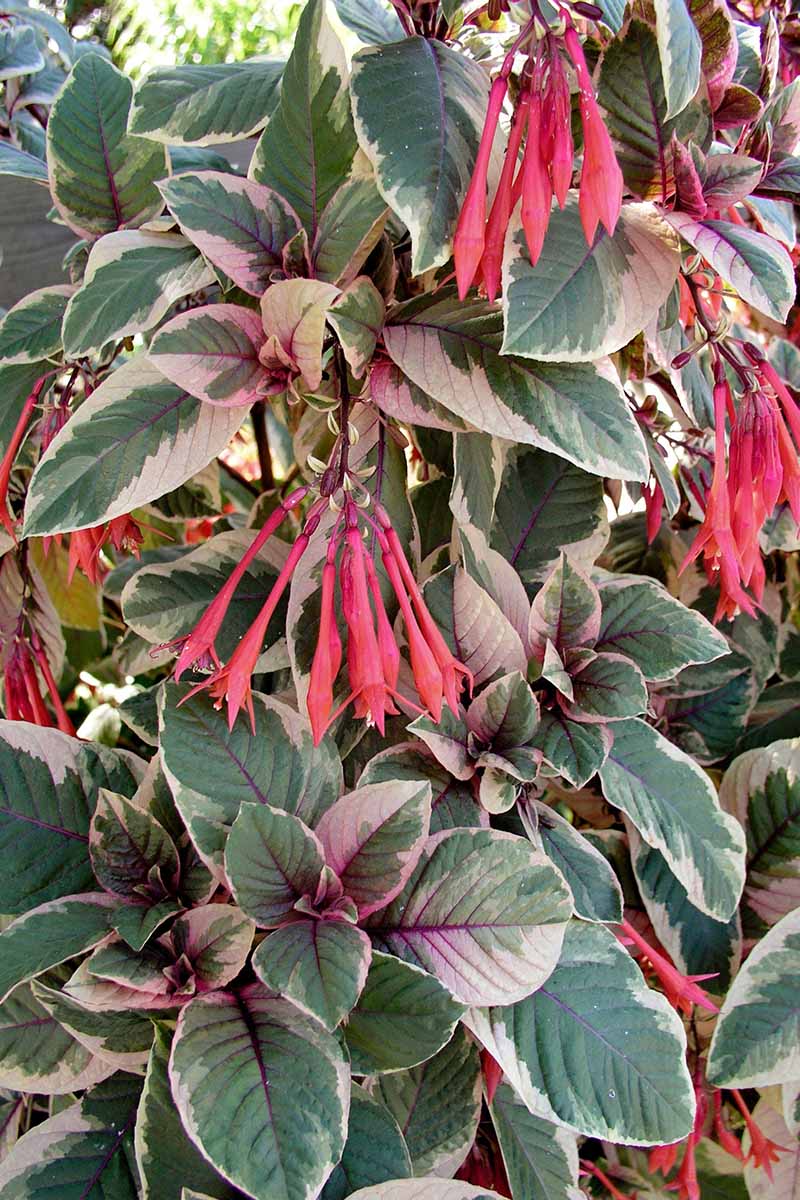
The foliage on this upright, very hardy plant is variegated with white, pink, and green on red stems.
You need to keep it in full sun to get the full effect, so it’s really best for gardeners in areas with cooler summers.
When in bloom from summer to the first frost, the five-foot-tall plant will feature single flowers with red tubes, long red sepals, and purple corollas.
15. Voodoo
We all love fuchsias because of how floriferous they are, but imagine one with blossoms bigger than the breadth of your palm.
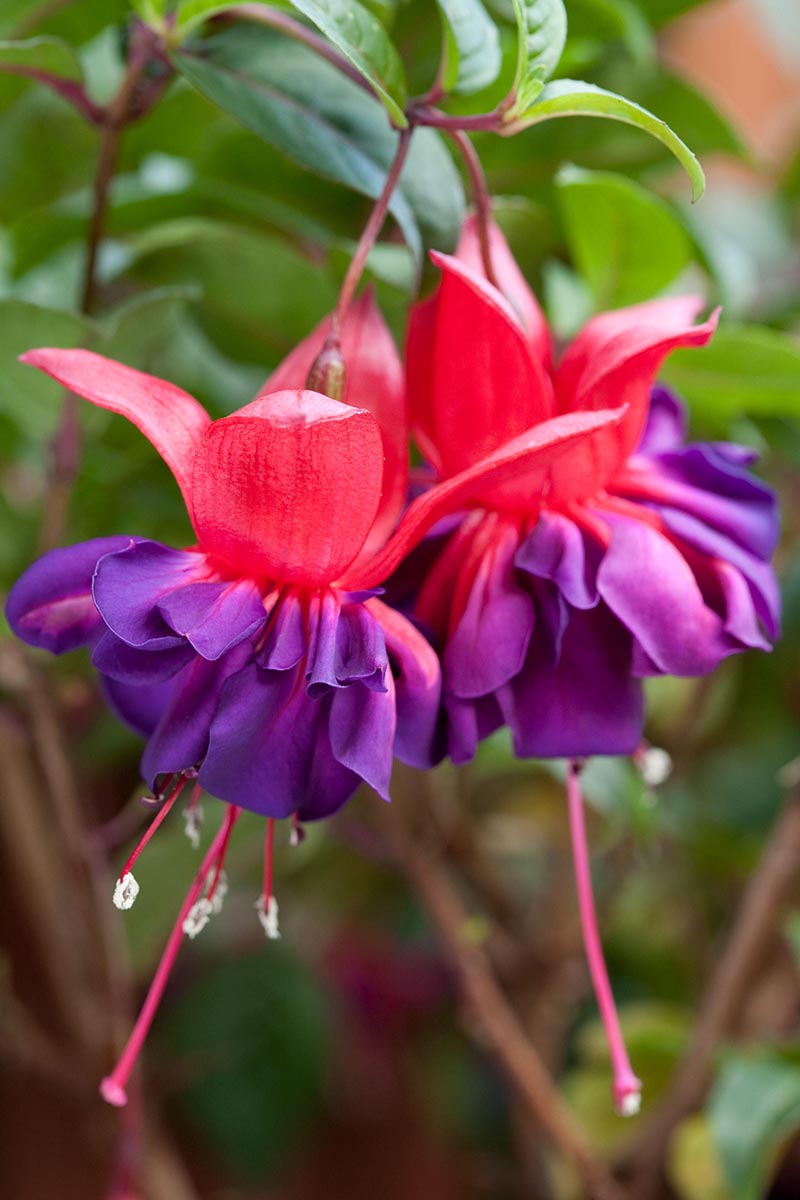
Part of the new generation of giant fuchsias, the magenta and purple blossoms on ‘Voodoo’ are a full four inches across. It looks like someone took a fuchsia plant and just blew it up, triple-sized.
The downside is that it’s only hardy to Zone 9, so you’ll definitely want to cut it back and bring it indoors during the winter. Read our guide for fuchsia overwintering tips.
It will grow up to six feet tall (with support) and a foot or two wide.
16. White Eyes
All eyes will be on ‘White Eyes,’ whether you grow it in a hanging basket or trailing over a garden wall.
The bushy plant grows 12 feet high and 24 inches wide, and is covered in double flowers that feature red sepals and tubes, and frilly white skirt petals with red filaments sticking out.

The flowers are some of the fullest you’ll find.
Plant ‘White Eyes’ in Zone 7b and up as a perennial, or Zone 8a and up if you’re growing yours in a container.
Keep an eye out for its counterpart, ‘Dark Eyes,’ which has all the same characteristics with dark purple corollas capped by rose pink tubes and sepals.
17. Windchimes
Windchimes is a series of upright fuchsias created with the idea of drawing in a new generation of fuchsia fans.
It was bred by Green Fuse Botanicals to have a mounding, upright growth habit with large, double flowers. The sepals tend to be extra long and curl slightly upwards.

Flowers come in red and white, white on white, pink and white, and rose and purple.
Each cultivar grows to about 15 inches tall and just a bit wider, and it will be constantly covered in flowers from summer through the first frost, even without deadheading.
So Many Fuchsias, So Little Time
I can easily see how people become obsessed with collecting fuchsias. They’re incredibly pretty and there are so many to choose from.
Just when I think I’ve found a favorite (‘Lady in Black,’ currently), another one comes along that captures my heart.

Are any of these options calling your name? Let us know what you’re going to plant in the comments. If you chance on something new and exciting, be sure to share that, too.
I hope this guide helped you narrow down your selection. Once you bring it home, there are lots of other guides that you might find useful in keeping your fuchsia happy:

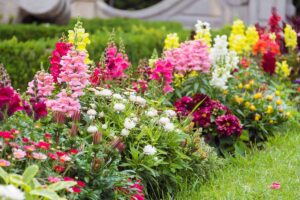
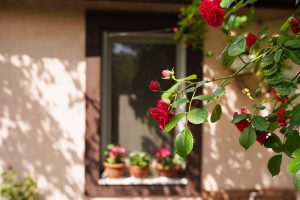
Want to overwinter my Fuscha in Zone5b. Pretty sure its a Dollar Princess from your photo and description. Thanks for this article about the different types!
Hi Jo, thanks for the kind words! ‘Dollar Princess’ is a stunner! We actually have a guide to help you overwinter your plant. It’s mostly a matter of giving it a sheltered spot that won’t get too cold, and providing a moderate amount of water.